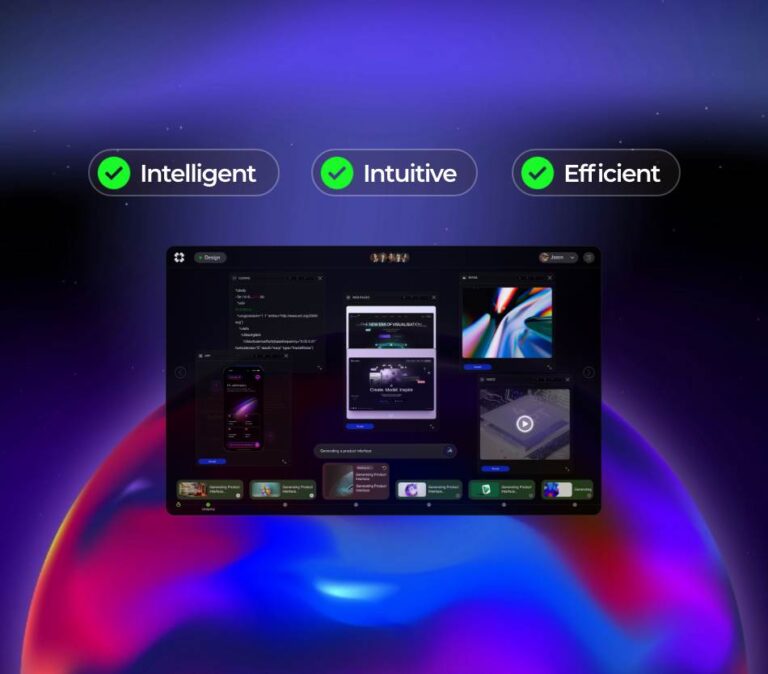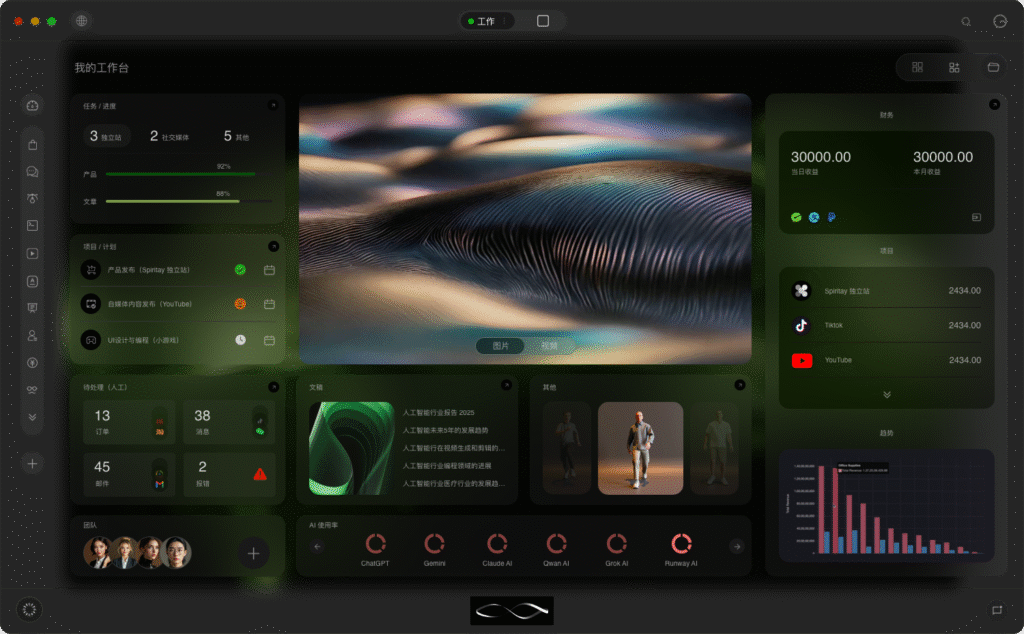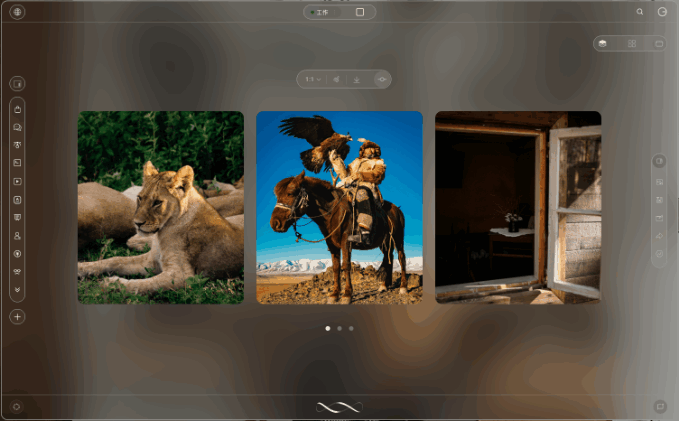Intro: why an AI-powered automation layer matters
Imagine a shared service in your organization that accepts human intent, enriches it with data, chooses the right tasks, and drives systems to completion — all while learning and improving. That is the promise of an AI-powered automation layer. For business leaders it means faster customer responses and lower operational cost. For developers it means a new integration surface that combines models, orchestration, and systems engineering. For product teams it becomes a lever for measurable ROI when intelligent automation replaces repetitive knowledge work.
Beginners: core concepts and everyday scenarios
At its heart, an AI-powered automation layer sits between users and enterprise systems. It accepts input — a ticket, an email, a chat, a scheduled event — and decides what to do next. Think of it as a conductor: it reads the score (data), assigns instruments (services and models), and keeps the tempo (orchestration and retries).
Real-world scenarios make this concrete:
- Customer support triage: classify, enrich with CRM data, suggest responses, open a billing ticket if needed.
- Marketing automation: monitor social channels, prioritize leads, trigger personalized workflows, and log conversions.
- IT ops: detect anomalies, run diagnostics, escalate or remediate via automated playbooks.
These are not just one-off automations. The layer manages lifecycle, observability, and governance across many automation flows.
Architectural overview for engineers
A practical architecture for an AI-powered automation layer has a few clear components: an intent/input layer, a decision/AI layer, an orchestration engine, connector & integration layers, and observability & policy services. Each component can be implemented with a mix of managed services and open-source tools.
Key components
- Input and enrichment: event buses, webhooks, document parsing, and data enrichment services that prepare signals for the AI layer.
- Decision layer: models that classify, rank, or generate actions. This may include LLMs for intent, smaller classifiers, and retrieval systems like vector search to fetch facts.
- Orchestration engine: the workflow runtime that sequences steps, handles retries, manages long-running tasks, and persists state.
- Connectors: idempotent adapters to SaaS APIs, databases, and internal services. These should be declarative where possible to ease testing and governance.
- Governance & policy: access control, audit logs, data masking, and human-in-the-loop checkpoints.
- Observability: traces, metrics, structured logs, and a feedback loop that feeds monitoring metrics back into model training or rule updates.
Popular choices for parts of this stack include Apache Kafka or managed event buses for input, LangChain or custom policy layers for decision logic, Temporal or Airflow for orchestration, and OpenTelemetry plus Prometheus/Grafana for observability. For model serving, KServe, Triton, or managed endpoints from cloud providers are common.
Integration patterns and API design
Integration is where many projects either win or fail. Two common patterns dominate:
- Synchronous request-response: good for short-lived automation with tight latency SLAs. Here the API returns a result or a task handle immediately. The trade-off is you need low-latency model endpoints and a fast orchestration path.
- Event-driven asynchronous: better for long-running business processes or when human review is required. Events are stored and processed reliably; workflows can be resumed after failures. This pattern scales easier, but latency for the final outcome will be variable.
Design APIs with idempotency, strong observability, and clear failure semantics. Expose a task handle and state API so clients can poll or subscribe to status updates. Use open standards like CloudEvents where practical to ease integrations.

Managed platforms vs self-hosted stacks
Teams commonly debate whether to rely on managed AI orchestration or build their own stack. Managed solutions (cloud vendor or SaaS orchestration) reduce operational burden, offer integrated monitoring, and speed time to value. Self-hosted stacks provide cost control, data residency, and finer-grained governance.
Consider these trade-offs:
- Speed to market: managed wins for quick pilots.
- Data control: self-hosted or private cloud solutions are required for sensitive sectors like healthcare or finance.
- Extensibility: if you expect custom connectors or bespoke orchestration semantics, a self-hosted approach with frameworks like Temporal or Flyte can be more flexible.
- Cost model: managed endpoints often charge per inference plus orchestration; self-hosting shifts cost to compute and storage that you control.
Deployment, scaling, and reliability
Scaling an AI-powered automation layer requires attention to both model inference and workflow execution. Key considerations:
- Autoscaling model endpoints: use conservative scale-to-zero for non-latency-critical tasks and warm pools for low-latency needs.
- Rate limiting and backpressure: protect downstream APIs and models. Circuit breakers and request queues prevent cascading failures.
- State management: durable stores for long-running workflows; the orchestration engine should persist state independently of compute nodes.
- Chaos testing: simulate model outages and slowdowns; measure system behavior under partial failures.
Operational metrics to track include end-to-end latency percentiles, throughput of workflows per minute, model cold-start times, retry rates, and human intervention frequency. These metrics map directly to user experience and cost.
Observability, security, and governance
Observability is non-negotiable. Correlate traces from the event ingress through model calls to external API invocations. Use structured events that carry correlation IDs. Collect sample payloads for debugging but apply data masking to protect PII.
Security and governance cover authentication, authorization, data residency, and explainability. Implement role-based access for who can change workflows or train models. Keep audit trails of decisions, especially if automation makes compliance-sensitive actions. For public-facing agents, add rate controls and model output filters to prevent abuse.
Regulations like GDPR or sector-specific rules may force design choices: e.g., model input logging might be restricted, or you must provide human review for automated decisions that materially affect people.
Product leaders and ROI: measuring impact
Companies measure automation ROI in two ways: cost savings from replaced manual work and revenue improvement from faster or more accurate processes. Practical metrics include average handle time reduction, successful automation rate (percentage of end-to-end tasks completed without human fallback), and SLA compliance improvements.
A stepwise ROI approach is effective: start with high-frequency, low-risk processes to demonstrate value, then expand to more complex flows. Pilot with clear KPIs, and instrument feedback loops so model or rule failures are detected and corrected quickly.
Case studies and vendor signals
One mid-size insurer replaced initial claims triage with an automation layer that combined optical document parsing, a classifier, and an orchestration engine. The result reduced first-touch time by 60% and required human review for only 12% of cases. The system used a hybrid stack: managed model serving for LLMs and Temporal for workflow.
On the tooling side, notable projects and launches inform best practices: LangChain and LlamaIndex for retrieval-augmented workflows, Temporal and Flyte for durable orchestration, Ray and Triton for scalable compute, OpenTelemetry for observability, and newer retrieval-first offerings such as DeepSeek AI-powered search that can act as a knowledge backbone for decision logic. For social listening and rapid content triage, some teams pair model outputs with Grok for social media insights to prioritize engagement.
Operational pitfalls and failure modes
Common issues include:
- Model drift causing increasing fallback rates — requires continuous evaluation and retraining pipelines.
- Unbounded retries leading to API bill shock — implement retry budgets and dead-letter queues.
- Insufficient observability for low-frequency failures — add sampling and targeted instrumentation.
- Governance lag: automation outpaces policy updates, creating compliance gaps. Pair rollout with explicit approval gates.
Implementation playbook (prose, step-by-step)
Start small and operationalize as you scale. A practical rollout looks like this:
- Identify a high-frequency, low-risk process and define clear KPIs.
- Design input and enrichment: collect data, add deterministic rules to reduce model reliance, and instrument every event with IDs.
- Choose an orchestration engine that supports your SLOs — synchronous for sub-second responses, durable workflows for long-running tasks.
- Decide model hosting: managed endpoints for quick pilots, self-hosted for control. Add a retrieval layer like vector search for facts; evaluation should include retrieval latency.
- Integrate connectors and implement idempotency. Add human-in-the-loop steps where policy requires.
- Deploy with canary or dark-launch techniques; monitor metrics and collect human feedback to refine models or rules.
- Scale iteratively and bake governance: access controls, auditing, and cost guardrails.
Future outlook
The next wave will push the AI-powered automation layer toward more autonomous decision-making, tighter retrieval-inference loops, and richer developer primitives. Expect increased convergence between orchestration frameworks and model orchestration, and the emergence of standardized control planes for policy and auditability. Open-source ecosystems (Temporal, Flyte, LangChain) and managed vendors will continue to innovate, but the hard work remains in integration, governance, and measuring business impact.
Key Takeaways
An AI-powered automation layer is not a single product, it’s an architecture and operating model. Design for observability, safety, and incremental ROI.
- Treat the layer as a platform: invest in connectors, policy, and monitoring.
- Pick orchestration patterns that match latency and reliability needs.
- Start with pilot use cases, measure concrete KPIs, and expand by automating high-frequency tasks first.
- Balance managed services and self-hosting based on data sensitivity and long-term costs.
With careful architecture and governance, an AI-powered automation layer becomes a durable advantage: it reduces manual toil, accelerates operations, and creates composable automation that teams can reuse across the enterprise.










